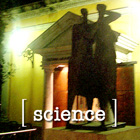
|
SCIENCE SAYS EVOLUTION WORKS 3 February 2006 The journal Science, in selecting its breakthrough of the year, decided to feature a series of scientific advances demonstrating how evolution works. At the end of a year that has seen a growing marginal movement in the US to displace evolution as mere conjecture in favor of the untested, religiously based "intelligent design" argument, Science intends to proactively defend science, as such. Sentido first reported on 3 February 2005 that evolution was being forced out of science curricula around the US. On 20 December 2005, the "intelligent design" crusade took a serious blow, when federal district judge John Jones ruled that the theory was based in religious doctrine and not in science and therefore was an unconstitutional effort to impose religious views on state-funded science classes. As the journal Science points out, "Today evolution is the foundation of all biology... At some level, every discovery in biology and medicine rests on it". Modern medicine and its means of identifying and treating infectious diseases depend on the reliable function of processes emerging from and understandable within the framework of evolution. Without such understanding, flu vaccines would be virtually ineffectual, antibiotics might have long outlived their usefulness and their overuse could have spawned devastating "superbugs" that could pose a grave risk to the public health. Discoveries in DNA and genetic science have aided researchers in exploring, testing and explaining the mechanisms at work in the process of biological evolution. One major breakthrough was the publishing, in September, of the complete genome of the chimpanzee, confirming its status as the closest genetic relative of our species. While there is only about 1% difference "in the nucleotide bases that can be aligned" between chimpanzee and human being, there are "40 million evolutionary events that separate them from us", according to the journal Science. These 'events', recorded in the coding of the human genome, could provide a map for how we diverged from the evolutionary path of our closest relatives. The year 2005 also brought significant advances toward a more complete understanding of actual speciation, the process by which one species splits into two. Scientists have observed the effects of diverging genepools ceasing to interbreed and believe they may be witnessing the process in real time, both where geographic barriers induce the split and also in populations that seem to slowly divide, while still cohabitating. Perhaps most instriguing is the discovery that acquired behavioral traits can induce speciation: biologists have observed in one species of corn-borer, where two groups feed on different plants in the same environment, a pattern of dissociation. Those that prefer corn tend to stick together, and those that prefer hops and mugwort form a separate community. The caterpillars even emit different pheromones, which means that their physical attractions are oriented toward the community whose behavior they share. If they no longer attract the other population, the two may well diverge and form two separate, parallel and yet cohabitating species. The history of the marine stickleback fish also yielded some evidence this year. Researchers studying dozens of species of the fish noted that "each has independently lost the armor plates needed for protection from marine predators", after being stranded in separate inland lakes at the end of last ice age. This evidence clearly demonstrates how a single common species evolved, based in part on its own genetic makeup and in part on details of its environment, into numerous distinct species and that such a process is closely linked both with the demands and the likelihood of survival. Also, importantly, scientists hope that comparative research into the differences between the human and chimpanzee genomes might explain why chimps are not as vulnerable to "AIDS, coronary heart disease, chronic viral hepatitis, and malignant malarial infections" and suggest treatments for human patients. In a highly controversial project, scientists achieved full reconstruction of the genome for the 1918 flu virus that killed between 20 million and 50 million people worldwide. They learned that the 1918 strain of influenza had evolved an independence from trypsin, an enzyme viruses normally have to "borrow" from the host organism. The 1918 strain was more highly self-sufficient and so could colonize its hosts more quickly and in far higher concentrations than otherwise possible. This suggests the beginnings of a new route in research to learn how to combat or prevent the emergence of pandemic viral strains in the future. So evolution is proving itself continually and in more fundamental ways as a scientific theory, proving its effectiveness in promoting other areas of research. It is also proving useful in understanding the natural functioning of the living world and in promoting human health and wellbeing. Albert Einstein was known to argue it is precisely the genius and complexity of the physical and evolving world, as revealed through sound science, that affirmed his belief in a higher power. For him, the proofs of science, evolution, billions of earth years in space-time, and the fascinating results of coincident physical and chemical phenomena meant that somehow science was a path to spiritual wonder; he did not believe in a god that would rather undermine the human process of understanding or diminish the grandeur of the natural world by claiming pure, predetermined authorship. [s] |
|||||||||||||||||||||
|
||||||||||||||||||||||








